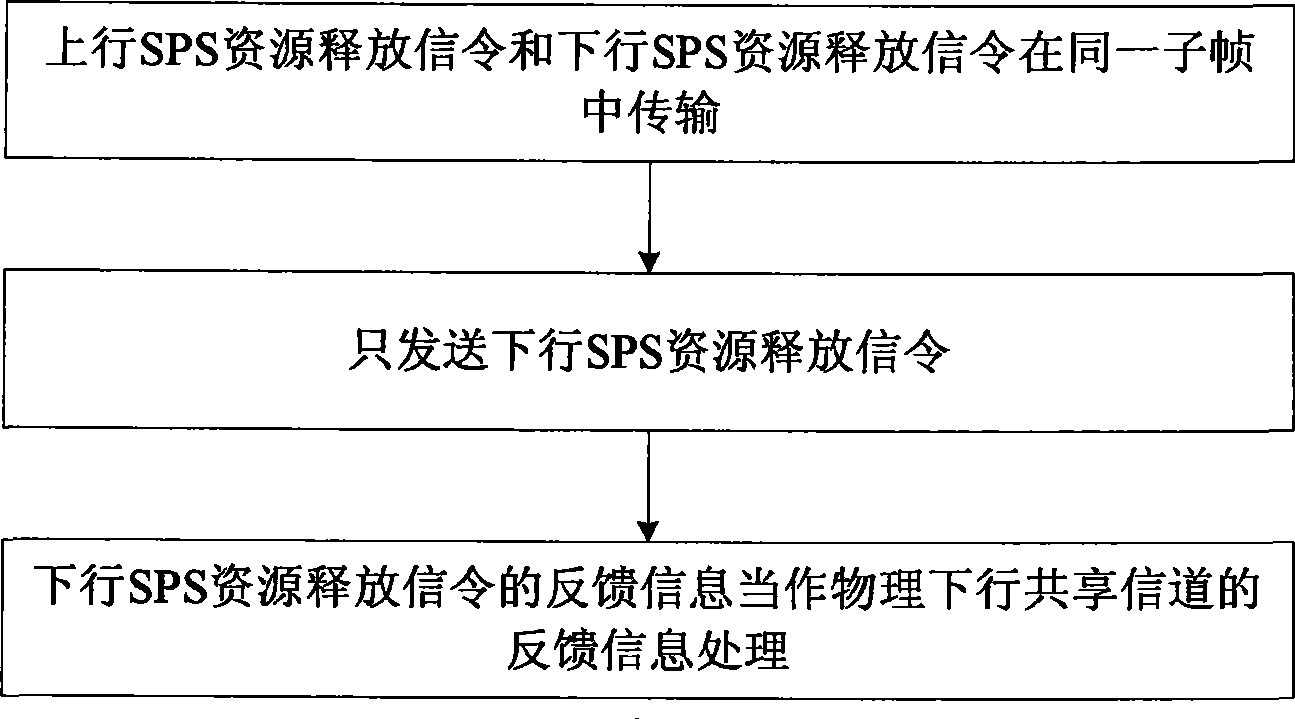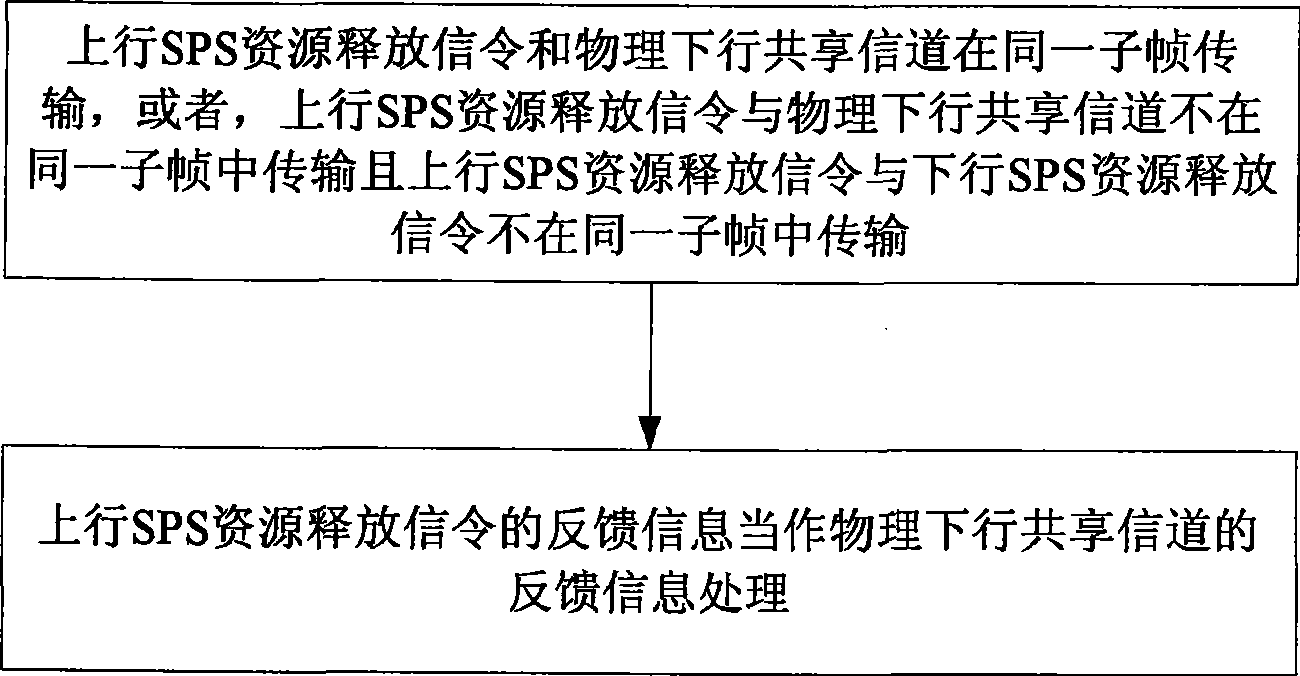Uplink semi-persistent scheduling released feedback information sending method
A technology of feedback information sending and semi-static scheduling, which is applied in the field of communication, can solve problems such as no solution, and achieve the effect of avoiding interference and ensuring performance
- Summary
- Abstract
- Description
- Claims
- Application Information
AI Technical Summary
Problems solved by technology
Method used
Image
Examples
Embodiment 1
[0105] For the same UE, when the resource release signaling of the uplink SPS and the resource release signaling of the downlink SPS are transmitted on the same subframe,
[0106] Only downlink SPS resource release signaling is sent, and the signaling in the downlink SPS resource release signaling indicates that both uplink SPS resources and downlink SPS resources are released at the same time, or that only downlink SPS resources are released, or that only uplink SPS resources are released H.
[0107] Downlink SPS resource release signaling includes: format0 and format1A indication signaling, continuous virtual resource block and discrete virtual resource block indication signaling, resource allocation signaling, modulation and coding mode signaling, new data indication signaling, HARQ process signal signaling, redundancy version signaling, power control signaling for PUCCH, and downlink allocation index signaling (FDD does not exist, only corresponding to TDD).
[0108] When...
Embodiment 2
[0141] The resource release signaling of the uplink SPS includes:
[0142] Format0 and format1A indication signaling, frequency hopping identification signaling, resource allocation signaling, modulation and coding mode signaling, new data indication signaling, cyclic shift amount signaling of data demodulation pilot, power control signaling for PUSCH Command, downlink allocation index indication signaling (FDD does not exist, only corresponding to TDD configuration 1-6), uplink allocation index indication signaling (FDD does not exist, only corresponding to TDD configuration 0), CQI trigger signaling.
[0143] When the resource release signaling of the uplink SPS indicates that the resources of the uplink SPS are released, each signaling is set as follows:
[0144] format0 and format1A indicate that the signaling is set to 0;
[0145] The frequency hopping identification signaling is set to 1;
[0146] Resource allocation signaling is all set to 1;
[0147] The modulation ...
Embodiment 3
[0156] In a TDD system, if the downlink feedback window contains an uplink SPS release subframe, the PDCCH of the subframe carries the uplink SPS resource release signaling, and the DCIformat 0 corresponding to the PDCCH of the subframe (the uplink SPS resource release signaling corresponds to The downlink allocation index indication signaling in DCI format 0) is the total number of PDSCH and SPS release subframes scheduled to the user terminal within the downlink feedback window; or, the downlink allocation index indication signaling in the DCI format 0 is downlink feedback The number of PDCCHs corresponding to the PDSCHs allocated to the user terminal (UE) within the window.
[0157] In a TDD system, if there is a downlink SPS release subframe in the downlink feedback window, the PDCCH of the subframe carries the downlink SPS resource release signaling, and the downlink allocation index in the PDCCH indicates that the signaling has been allocated in the downlink feedback wind...
PUM
 Login to View More
Login to View More Abstract
Description
Claims
Application Information
 Login to View More
Login to View More - R&D
- Intellectual Property
- Life Sciences
- Materials
- Tech Scout
- Unparalleled Data Quality
- Higher Quality Content
- 60% Fewer Hallucinations
Browse by: Latest US Patents, China's latest patents, Technical Efficacy Thesaurus, Application Domain, Technology Topic, Popular Technical Reports.
© 2025 PatSnap. All rights reserved.Legal|Privacy policy|Modern Slavery Act Transparency Statement|Sitemap|About US| Contact US: help@patsnap.com



